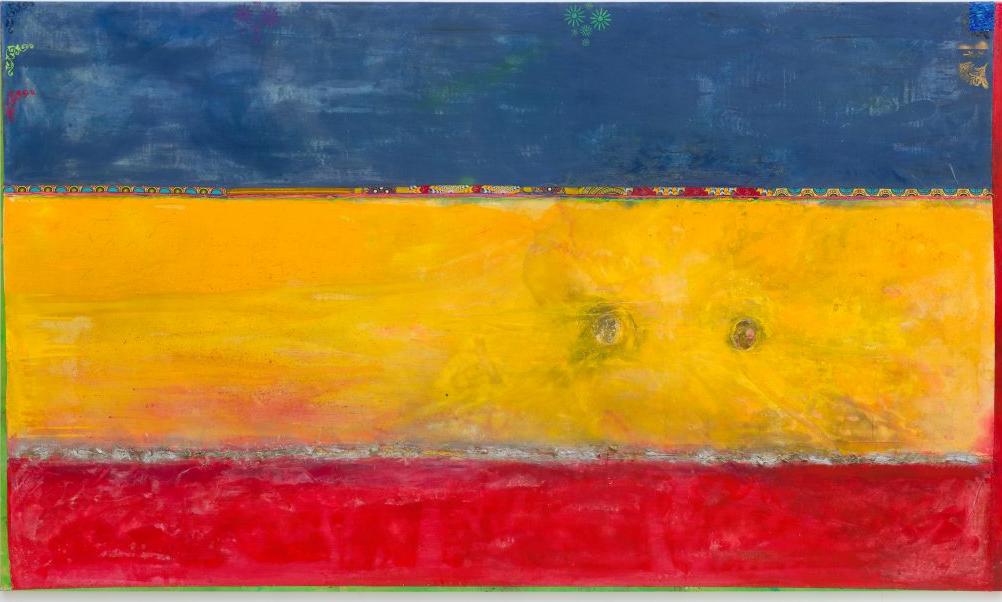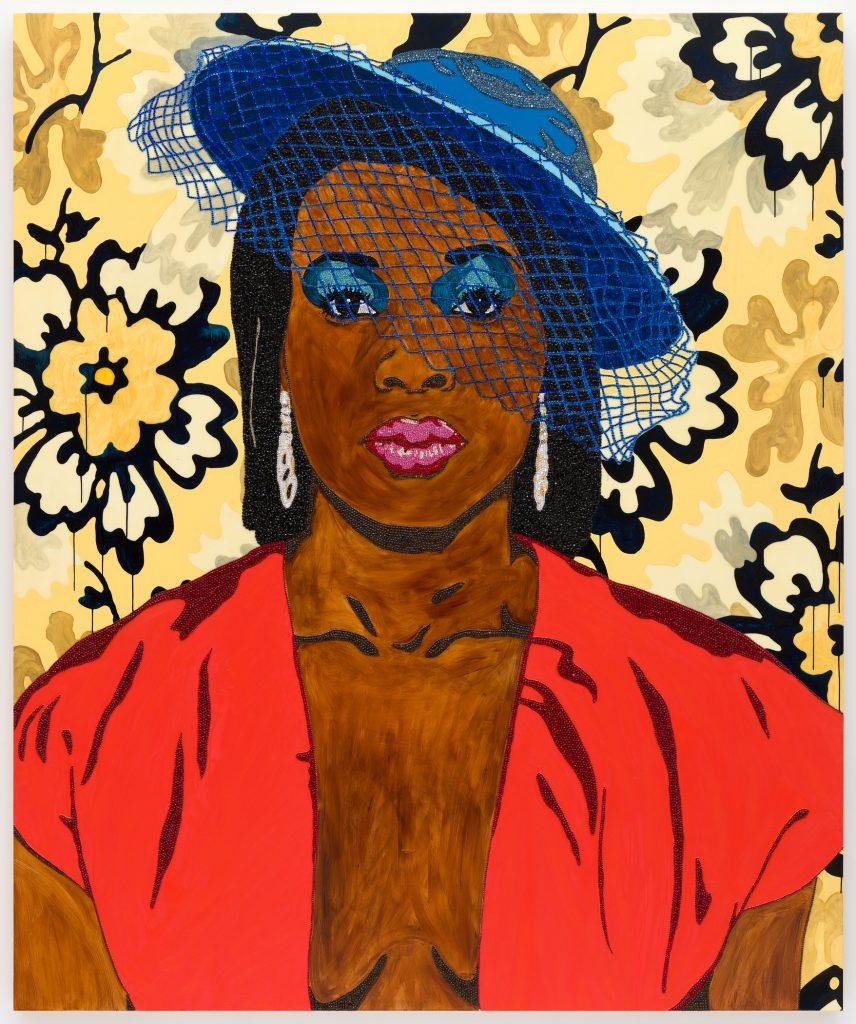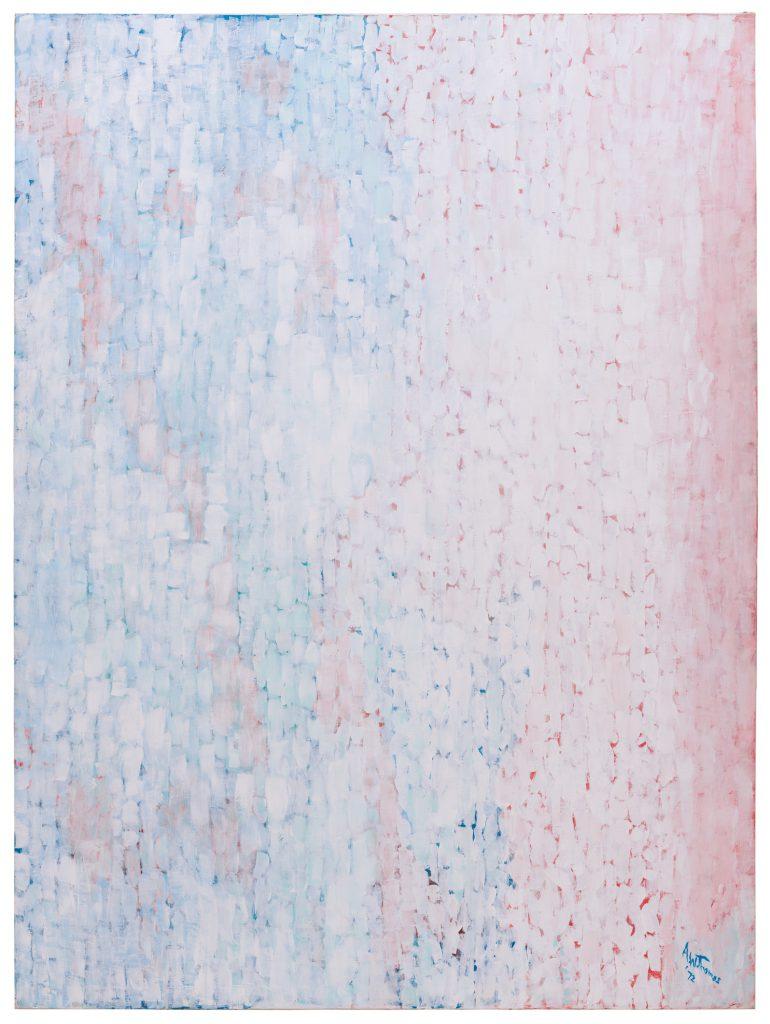The new acquisitions span six decades and several genres, and in most cases, are SFMOMA’s first works by the respective artists. Included in this group of acquisitions are:
- Tarpaulin No. 1 (2018) by Rebecca Belmore
- Seascape with Star (n.d.) by Forrest Bess
- Elder Sun Benjamin (2018) by Frank Bowling
- The Kitchen Garden on the Eyot (1946) by Leonora Carrington
- Estudo para Bicho Pássaro do Espaço (maquette) (1960) and Bicho Pássaro do Espaço (1960) by Lygia Clark
- Twilight (1956) by Norman Lewis
- Untitled (ca. 1993) by Barry McGee
- Midnight Street (1944) by Kay Sage
- Cumulus (1972) by Alma Thomas
- Qusuquzah, une très belle négresse 1 (2011) by Mickalene Thomas
These works will be presented alongside existing collection works throughout the museum beginning in late August 2019.
The acquisition effort was led by Gary Garrels, Elise S. Haas Senior Curator of Painting and Sculpture, and Janet Bishop, Thomas Weisel Family Chief Curator and Curator of Painting and Sculpture. Together Garrels and Bishop carefully considered the priorities for the collection and their alignment with SFMOMA’s new strategic plan, which among many goals, aims to diversify the collection, staff and visitorship, and to underscore the museum’s commitment to the art for our time.
“Works by these artists have long been on our wish list. We are thrilled that we can now finally make these acquisitions a reality,” said Garrels. “The acquisition of these works, and many more to come, will enable the museum to better and more fully represent the art for our time and bring a much richer array of artists’ voices into the museum.”
Rebecca Belmore
Rebecca Belmore’s Tarpaulin No. 1 (2018) is a large ceramic sculpture made from a cast mold. The smudges of black across the sand-colored sculpture evoke an urban grittiness, yet there is a softness in the curve over what appears to be a figure kneeling or hunching. Underneath the sculpture, a void represents the homeless—a percentage of which is made up of people with indigenous backgrounds. This sculpture—the first work by Belmore to enter SFMOMA’s collection—strengthens the museum’s holdings and representation of native, indigenous and aboriginal art. Tarpaulin No. 1 further resonates with existing holdings categorized as body, performance and feminist art.
Based in Vancouver, British Columbia, Belmore is an Anishinaabe artist and a member of the Lac Seul First Nation. Her multidisciplinary practice includes performance, installation, photography, sculpture and video. Throughout her over 30-year career, Belmore has produced artwork that raises awareness about indigenous history and culture, racial stereotyping, language loss, violence against women and natural resources.
Forrest Bess
Seascape with Star (n.d.) is imbued with symbolic content that the artist himself did not understand and sought for decades to decipher, a symbolism associated with his search to find a hermaphroditic sexual identity. Formally, the painting is notable for its richly worked surface and its blocks of color. Bess’s painting finds context in the work of his California peer Lee Mullican and earlier American modernists such as Marsden Hartley and Arthur Dove.
Bess spent his life on the Gulf Coast of Texas, where he worked as a fisherman and bait catcher. In 1934, he began painting professionally, creating commissioned portraits of houses, dogs and people, along with paintings based on his dreams. Beginning in the early 1950s, despite his isolation, Bess achieved recognition in New York. He showed regularly with the Betty Parsons Gallery and his work was championed by the eminent art historian Meyer Schapiro, with whom he engaged in ongoing correspondence.
Frank Bowling
Made on a monumental scale with a bold geometric composition reminiscent of a national flag, Elder Sun Benjamin (2018) continues Frank Bowling’s long explorations on postcolonial states, territories and migration with subtle allusions to his own autobiography. The addition of this significant composition, Bowling’s first to enter SFMOMA’s collection, bolsters the museum’s rich holdings of international postwar abstraction; furthers SFMOMA’s continued commitment to the art for our time; and adds to the institution’s growing collection of recent works by black artists.
Bowling was born in Bartica, Guyana (then colonial British Guiana), in 1934. After moving to England, Bowling first worked in a figurative style as part of the British Pop movement in the 1960s before making significant contributions to abstraction after he moved to New York in 1966. In his work across six decades and three continents, Bowling has continued to push the bounds of abstraction, offering poignant reflections on migration, multicultural experience and postcolonial history.
Leonora Carrington
Painted in Mexico City in 1946, The Kitchen Garden on the Eyot was completed just days before the birth of the artist’s first son. This highly detailed painting connects to the artist’s physical and spiritual experience of pregnancy, symbolically exploring issues of fertility and gender within a landscape populated by mythological figures and animals and referencing the formal gardens of her British childhood. Along with Dorothea Tanning’s Self-Portrait (1944, acquired by SFMOMA in 2015) and a newly acquired painting by Kay Sage, The Kitchen Garden on the Eyot augments the museum‘s holdings by women Surrealists, a historically overlooked gap in the collection.
Carrington was born in 1917 in Clayton Green, Lancashire, in the north of England. In the late 1930s, she became closely involved with the Surrealist movement in Europe. In 1942, Carrington moved to Mexico City, where she joined a growing community of European exiles. The artist spent most of her mature career in Mexico City, where she lived and worked until her death in 2011.































